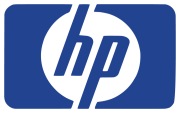For the past couple of months I have been talking about the various implications, advantages and benefits of using social technologies, in relation to organisations around the world. Latest stats indicate that over 80% of fortune 500 companies are using social media as part of their marketing strategy.
So what’s the main purpose or in other words the end goal of using social technologies? To simplify it in one word… it would be ‘Money’!! Every organisation craves for money and most importantly profit. This is where Return on Investment (ROI) comes in. ROI can be calculated by, subtracting the gain from investment to the cost of investment, then dividing the result by the cost of investment and finally multiplying the output by 100%. Therefore the higher the percentage of ROI is the more likely that the investment paid off. An organisation that has benefited from their social media campaign is the one and only Oreo.
For those who have not tried Oreo before it’s basically a cookie consisting of two chocolate disks with a sweet cream filling in between. Owned by the Nabisco division of Monedelēz International, the organisation has been a worldwide brand since the 20th century. For the past decade or so they are famously known for their endearing TV ad campaigns. However recently the digital age has become a popular platform for marketing as well as increasing positive brand image. Consequently Oreo have taken advantage of their well-known brand to invest time and money in social media marketing resulting in over:
– 34 Million Facebook fans
– 187K Twitter followers
– 20 million You Tube views
– 101K Instagram followers
– 3K Pinterest followers
Last year Oreo celebrated their 100th year of existence. With the help of 360i, Oreo commemorated the millstone by hosting an event, which included inviting the online community to pitch their own story ideas as part of a competition that went on for 100 days. As a result of this, fan engagement soared with 280% increase in Facebook shares and 510% increase in re-tweets on Twitter. For a large organisation such as Oreo the return earned from investment clearly outshines the cost of investment. Both the tangible and intangible created by Oreo’s campaign are clearly recognisable. Therefore it is evident that Oreo’s social marketing strategy has paid off with an increase in the organisations ROI.
That’s all for my last blog! Hope you enjoyed the read and don’t forget leave a comment 🙂




 Activity
Activity


